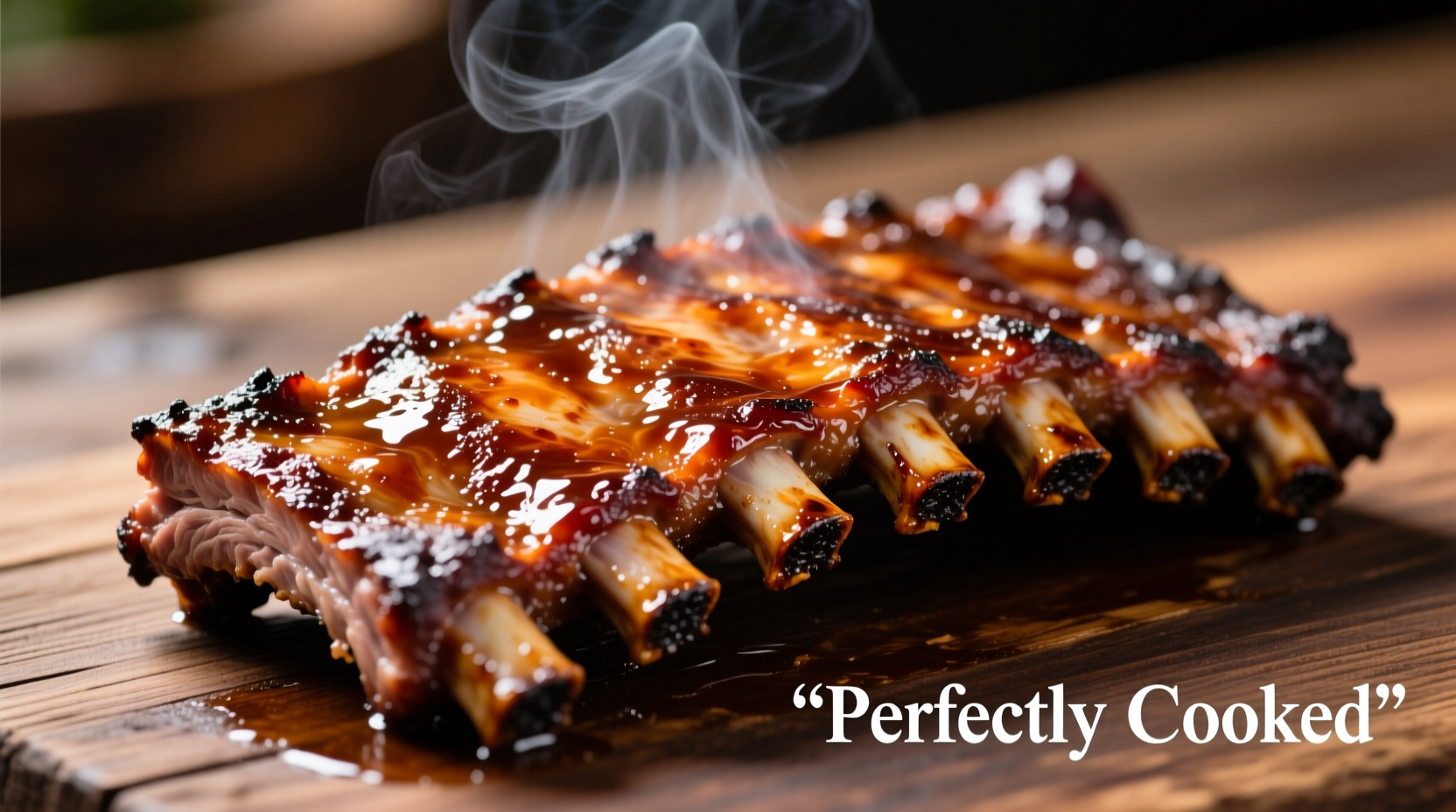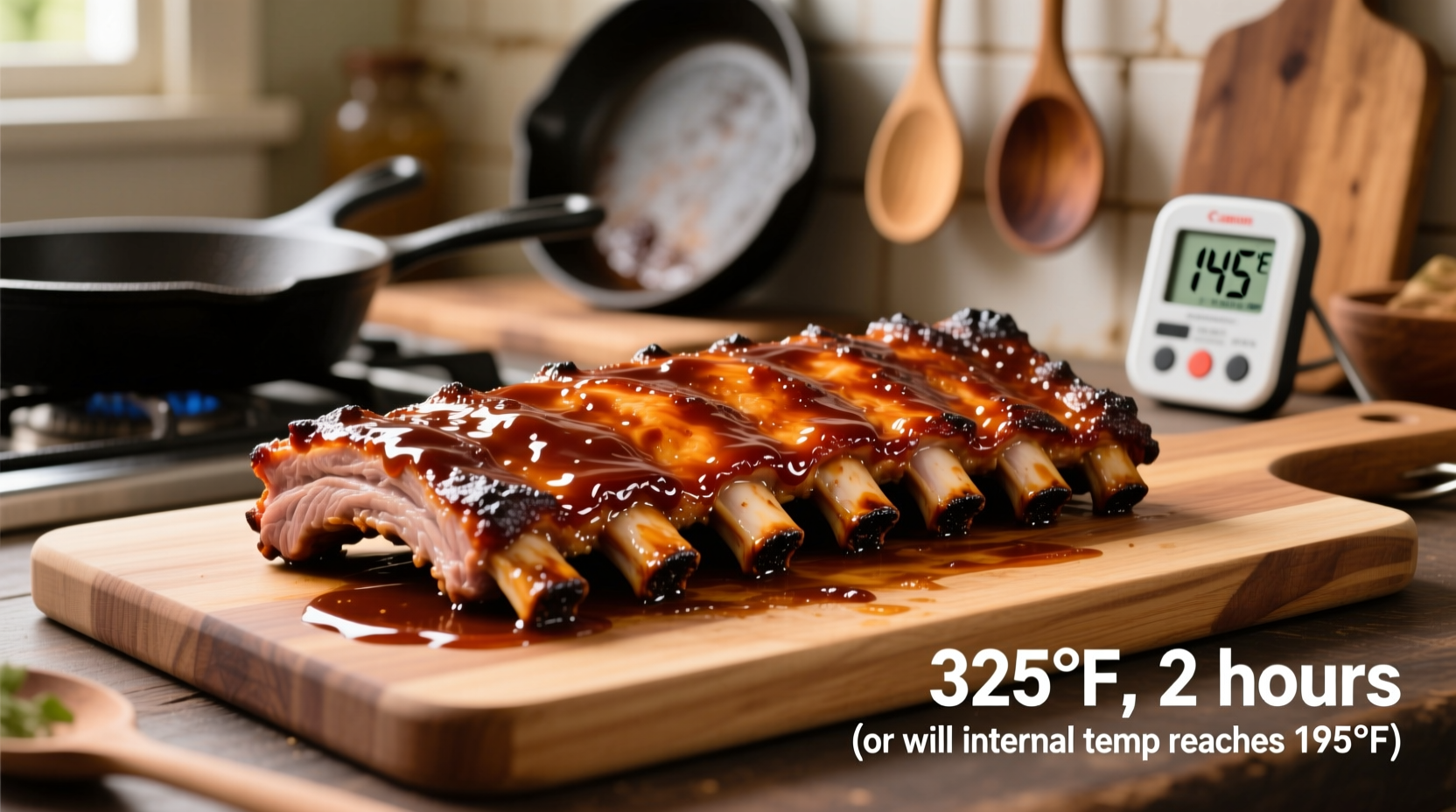Perfectly cooked baby back ribs typically require 3-5 hours at 225-275°F, depending on your cooking method. For oven cooking at 300°F, plan for 2.5-3 hours; on a grill at 250°F, allow 3-4 hours; and in a smoker at 225°F, expect 4-5 hours. The internal temperature should reach 195-205°F for optimal tenderness.
Getting baby back ribs just right separates barbecue novices from true pitmasters. Many home cooks struggle with dry, tough ribs or dangerously undercooked meat simply because they don't understand how cooking time interacts with temperature and meat science. This guide delivers precise timing based on professional chef techniques and food science principles, not just internet folklore.
Why Cooking Time Varies for Baby Back Ribs
Baby back ribs aren't like other cuts where time alone determines doneness. Their delicate structure requires balancing three critical factors:
- Fat rendering - The marbling needs sufficient time to melt into the meat
- Collagen conversion - Connective tissues transform into gelatin between 160-205°F
- Surface development - Achieving that perfect bark without burning
According to the USDA Food Safety and Inspection Service, pork becomes safe to eat at 145°F, but baby back ribs require much higher temperatures for proper texture. The Culinary Institute of America's barbecue curriculum emphasizes that 195-205°F is the ideal range where collagen fully converts to gelatin while maintaining moisture.
Cooking Method Comparison Guide
Your chosen cooking method dramatically impacts timing. Here's how different approaches affect your baby back ribs cooking schedule:
| Cooking Method | Temperature | Approximate Time | Key Characteristics |
|---|---|---|---|
| Smoker | 225°F | 4-5 hours | Best smoke penetration, most tender results |
| Indirect Grill | 250°F | 3-4 hours | Balanced smoke flavor with faster cooking |
| Oven | 300°F | 2.5-3 hours | Consistent results without smoke flavor |
| High-Heat Grill | 350-400°F | 1.5-2 hours | Quick cooking but risk of drying out |
Temperature-Specific Cooking Timelines
Professional pitmasters adjust cooking times based on precise temperatures. Here's what happens at different temperature settings:
225°F (Traditional Low-and-Slow)
At this temperature, baby back ribs need 4-5 hours. The slow cooking allows maximum collagen conversion while preventing moisture loss. The Kansas City Barbeque Society competition guidelines recommend this temperature for championship-quality ribs. You'll notice the meat begins to pull back from the bones around the 3-hour mark.
250°F (Balanced Approach)
This slightly higher temperature reduces cooking time to 3-4 hours while still producing excellent results. Many restaurant kitchens use this method to maintain quality while improving kitchen efficiency. The meat will develop a beautiful mahogany color after 2.5 hours.
275-300°F (Faster Oven Method)
For time-pressed cooks, this oven method delivers good results in 2.5-3 hours. Wrap the ribs in foil after 1.5 hours to prevent drying. Food scientist Harold McGee explains in On Food and Cooking that this higher temperature accelerates collagen breakdown but requires careful monitoring to avoid toughness.
How to Tell When Baby Back Ribs Are Perfectly Cooked
Time is just one indicator. Use these professional techniques to verify doneness:
- The Bend Test - Lift the rack with tongs; it should bend freely and develop small cracks in the bark
- Internal Temperature - Insert a thermometer into the thickest part between bones (195-205°F)
- Meat Shrinkage - Bones should protrude slightly (about 1/4 inch) from the end
- Fork Tenderness - A fork should slide in with slight resistance, not fall apart

Avoid These Common Timing Mistakes
Even experienced cooks make these timing errors that ruin otherwise good ribs:
- Opening the lid too frequently - Each peek adds 15-20 minutes to cooking time
- Ignoring meat thickness - Thicker racks need 20-30 minutes extra
- Misjudging thermometer placement - Measure between bones, not near bone
- Rushing the resting period - Let ribs rest 15-20 minutes before serving
Special Considerations That Affect Cooking Time
Certain factors require timing adjustments to prevent under or overcooking:
- Starting temperature - Cold ribs from the fridge add 30-45 minutes versus room temperature
- Rack size - Smaller racks (1.5 lbs) cook 20% faster than larger (2.5+ lbs)
- Humidity levels - Dry environments may require foil wrapping earlier
- Meat quality - Higher marbling content extends optimal cooking window
According to research published in the Journal of Food Science, pork collagen begins converting at 140°F but requires sustained temperatures above 160°F for complete transformation. This explains why low-and-slow methods produce superior texture compared to high-heat approaches.
Troubleshooting Cooking Time Issues
When things don't go as planned, these adjustments can save your ribs:
- Ribs cooking too fast - Reduce temperature by 25°F and check hourly
- Ribs not tender at target time - Continue cooking in 30-minute increments until 200°F internal temp
- Bark forming too quickly - Wrap in butcher paper or foil to slow surface drying
- Uneven cooking - Rotate the rack 180 degrees halfway through cooking
Remember that visual cues matter more than strict timing. As Chef James Beard Foundation award winner Melissa Cookston emphasizes, "Rib timing is a guideline, not a rule. Your eyes, hands, and thermometer are your best tools."
Frequently Asked Questions
How long to cook baby back ribs at 225 degrees?
At 225°F, baby back ribs typically require 4-5 hours. The low temperature allows collagen to slowly convert to gelatin while maintaining moisture. Check for doneness when the internal temperature reaches 195-205°F and the ribs bend easily when lifted with tongs.
Can you overcook baby back ribs?
Yes, overcooking baby back ribs causes the meat to fall completely off the bone, losing its desirable texture. When internal temperature exceeds 205°F, the muscle fibers begin to dry out. Perfect ribs should separate from the bone with light pressure but maintain structural integrity.
Should I wrap baby back ribs during cooking?
Wrapping baby back ribs (the Texas Crutch method) after 2-3 hours helps retain moisture during longer cooks. Use foil for maximum steam or butcher paper for better bark retention. This technique typically reduces total cooking time by 30-60 minutes while preventing drying, especially at temperatures below 250°F.
How long to cook baby back ribs in the oven?
In the oven at 300°F, baby back ribs need 2.5-3 hours. For best results, place ribs bone-side down on a foil-lined baking sheet, cover tightly with foil, and cook until the internal temperature reaches 195-205°F. Uncover for the last 30 minutes if you want to develop a crust.
How do I know when baby back ribs are done without a thermometer?
Without a thermometer, use the bend test: lift the rack from one end with tongs. Properly cooked ribs will bend freely and develop small cracks in the surface. The meat should pull back slightly from the bones (about 1/4 inch), and a fork should slide in with slight resistance but not fall apart completely.











 浙公网安备
33010002000092号
浙公网安备
33010002000092号 浙B2-20120091-4
浙B2-20120091-4